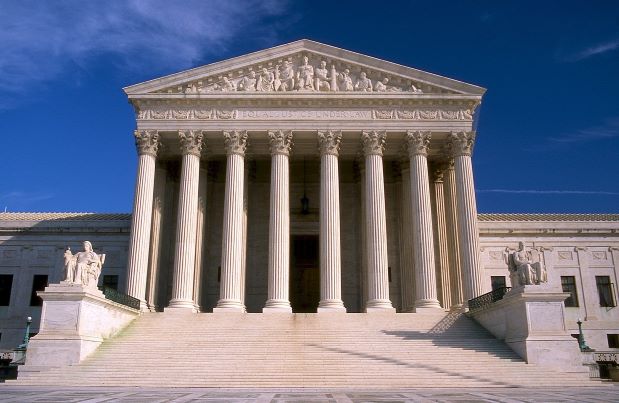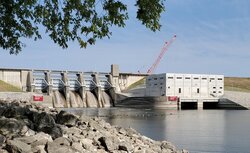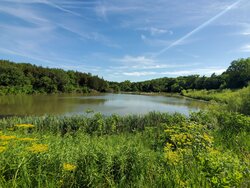DNR and EPA Revising Implementation of Clean Water Act Section 401
posted
on Tuesday, September 22, 2020
Guest blog post by Katie Luzier, IEC Legal Intern 2020
Recently, IEC submitted comments on rules proposed by the Iowa Department of Natural Resources (DNR) that would change how it ensures federal permits issued by the Army Corps of Engineers meet state water quality standards. The rules implement Section 401 of the Clean Water Act, which provides state agencies with authority to put conditions on federal permits. IEC argued that the changes impermissibly restrict DNR’s authority to protect water quality, lacked justification, failed to impose conditions that should apply to all permits, and did not adequately define the public notice process.
 Under its existing rules, the DNR lists conditions on federal permits for Army Corps “general permits.” These general permits allow small-scale impacts to wetlands or other waters and impose the same conditions for multiple projects, rather than imposing unique conditions to each project. Every time the Army Corps issues a new nationwide or regional permit, DNR updates the rule with conditions to protect water quality. DNR’s proposed rules would remove the requirement to update the rules with each issuance. Instead, DNR lists the conditions that it could impose on the permits. It also changes the conditions from its existing conditions, proposed to allow joint public notices with the Corps of Engineers and allow posting to the DNR website for public comments.
Under its existing rules, the DNR lists conditions on federal permits for Army Corps “general permits.” These general permits allow small-scale impacts to wetlands or other waters and impose the same conditions for multiple projects, rather than imposing unique conditions to each project. Every time the Army Corps issues a new nationwide or regional permit, DNR updates the rule with conditions to protect water quality. DNR’s proposed rules would remove the requirement to update the rules with each issuance. Instead, DNR lists the conditions that it could impose on the permits. It also changes the conditions from its existing conditions, proposed to allow joint public notices with the Corps of Engineers and allow posting to the DNR website for public comments.
IEC’s comments argue that DNR cannot limit the conditions it can put on future permits that it has not yet seen. DNR listed a series of conditions that it could impose on future permits, which appeared to be a complete list of conditions DNR could consider for future permits. In addition, DNR changed the conditions from the conditions currently in rule. It did not justify making substantive changes to the conditions. And in terms of public notice, the DNR suggested it would provide notice electronically without specifying how it would do so.
In June, the EPA adopted its own new rule to implement Section 401. The EPA's first significant change defines the start of the one-year time-limit to when the notification of an application is received. Permit applicants accused states of not starting the one-year clock when required to do so, but states argued they could not develop conditions based on incomplete applications. EPA’s new rule clarifies that the one-year deadline starts with an application, even if a state needs more information from the applicant. The rule also stops applicants from withdrawing and resubmitting applications to prevent a state from denying certification because the state hasn’t finished its review within one year.
The scope of 401 certification requirements had traditionally been defined by the Supreme Court  decisions, which granted states broad authority over their 401 certifications. The law was guided by two notable Supreme Court cases: PUD No. 1 of Jefferson County v. Washington Department of Ecology and S.D. Warren v. Maine Bd. of Environmental Protection. The EPA’s new rule largely draws on other sections of the CWA when determining the scope of Section 401 and Congress’ intent when writing Section 401. Under the new rule the state can only consider discharges from a point source into a water of the United States. The EPA argued that its definition of certain words in Section 401 is consistent with the intent of the CWA, the scope of related Supreme Court cases, a recent executive order that triggered the rulemaking and its rulemaking ability.
decisions, which granted states broad authority over their 401 certifications. The law was guided by two notable Supreme Court cases: PUD No. 1 of Jefferson County v. Washington Department of Ecology and S.D. Warren v. Maine Bd. of Environmental Protection. The EPA’s new rule largely draws on other sections of the CWA when determining the scope of Section 401 and Congress’ intent when writing Section 401. Under the new rule the state can only consider discharges from a point source into a water of the United States. The EPA argued that its definition of certain words in Section 401 is consistent with the intent of the CWA, the scope of related Supreme Court cases, a recent executive order that triggered the rulemaking and its rulemaking ability.
In PUD No 1 of Jefferson County, the Supreme Court held that Section 401(d) refers broadly to the compliance of the applicant with applicable water quality regulation rather than compliance with the discharge. Washington State’s law required a minimum stream flow, which the state included in its Section 401 certification. The petitioners, PUD No 1 of Jefferson County, claimed Section 401 only granted states the power to consider discharges. The court found that Section 401 included activities related to water quality. Thus, Washington had the ability to consider activities affecting compliance with water quality standards that did not result from a discharge. Therefore, States and Tribes can authorize additional conditions and limitations on the activities of the applicant.
Later, in S.D. Warren, the Supreme Court found that the use of the word "discharge" instead of  "discharge of a pollutant" was a broader term that did not require pollutants to be present in the discharge to waters of the United States – so states had to certify permits for actions like dams, which change water flow without directly adding pollutants.
"discharge of a pollutant" was a broader term that did not require pollutants to be present in the discharge to waters of the United States – so states had to certify permits for actions like dams, which change water flow without directly adding pollutants.
Critics of the new EPA rule argue that it violates both PUD No. 1 of Jefferson County and S.D. Warren because it restricts state agencies’ authority to enforce compliance with state water quality standards beyond a narrow definition of discharge. Various environmental and related policy groups are critical of EPA’s changes to the permitting process. Trout Unlimited published a blog post about the proposed rule with a call to action due to the new restrictions on a State agency’s timeframe to review and ability to request a project to withdraw and re-apply. Earthjustice, Sierra Club, and others commented that the rules misunderstands the very purpose of the CWA. Sierra Club’s Senior Campaign Representative for Beyond Dirty Fuels, Joan Walker says “[t]his erosion of our fundamental clean water protections drastically limits states’ ability to protect their water at a time when access to clean water is more important than ever.” States themselves also disagree with the rule: after EPA finalized the rule in June, it was sued by 20 states in July. The States write in their complaint that the “[t]he Rule upends fifty years of cooperative federalism by arbitrarily re-writing EPA’s existing water quality certification regulations to unlawfully curtail state authority under the Clean Water Act.”

IEC is concerned that the combination of the new EPA rule and proposed DNR changes would reduce protections for Iowa’s waters, allowing a thousand cuts that would further harm Iowa’s few remaining wetlands and resulting in poorer water quality.
- clean water
- clean water act
- dnr
- water quality